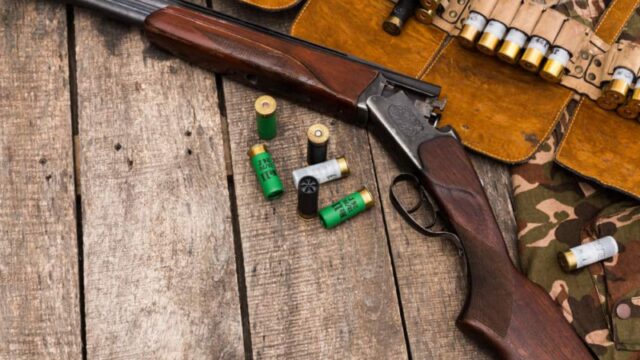How should firearms be transported on ships? If you have experience with firearms, then you know that firearms should be removed, put in a safe place, and then stored. The same goes for how guns are transported on ships. This post does some research to find out the best way to do this without any accidents and how to transport guns on board.
Can You Carry a Gun on a Boat?
We should also cover the legal aspects of carrying firearms on ships. The laws vary depending on whether you are in U.S. waters, international waters, or other countries waters.
In a nutshell, here’s what you should know about the legality of guns on board:
If you are in US waters. In the United States, the Second Amendment to the U.S. Constitution protects the right of Americans to own and bear firearms. However, laws vary from state to state, so be sure to do more research to find out if there are any special circumstances or rules in your area.
If you are in international waters. Once you are 24 nautical miles (27.62 mi) from any coastline, you are in international waters. In international waters, you must comply with the laws of the country in which your vessel is registered and the country under which your vessel is flagged.
If you are in the waters of another country. The legality of owning a firearm will depend on the laws of the country.
Three Goals of Proper Firearm Transportation
Going forward, we should understand why you want to ensure that firearms are properly transported onboard. There are three main reasons for this:
You want to avoid accidents. The first thing that comes to most of our readers’ minds is that firearms should be transported properly to avoid accidents. This is indeed a very important reason to be careful with guns on board, but it’s not the only reason.
You want to prevent other people from having access to guns. If there are kids on board, they may want to play with your gun. Other than that, you should not allow intruders or anyone else on the boat to possess your firearm.
You want to keep your gun in top-notch condition so you can use it when you need it. If you don’t store your guns and ammunition properly, you may not be able to use them when you need them.
We’ll build on these three points when we outline tips for properly transporting a firearm. For a fuller picture, we’ll cover the transport of firearms and ammunition.
How To Transport Firearms On A Boat

Transporting A Single Firearm
- Unload and box the firearm (open the muzzle or disassemble the firearm) before boarding the aircraft.
- Carefully place the gun on the front of the boat.
- Make sure the gun is facing the direction the boat is moving (away from all passengers).
- Sit directly behind the gun, facing forward, and continue to operate the boat as needed.
The first step that needs to be taken before placing a weapon near the ship or passengers is to unload and create it.
When taking these precautions, you can choose to perform an opening act or disassemble the gun completely.
The option you decide on should be the safest for the specific type of firearm you use.
Transporting More Than One Firearm
When planning any type of hunting and fishing trip, there may be more than one person involved. Since there will be more people in attendance on this trip, there will obviously be more guns to consider.
Now that you know how to properly move one weapon on a ship, you also need to know what to do when more than one weapon needs to be transported.
Take a look at the steps outlined below to learn how to transport multiple guns on the same ship and how to position all passengers during the transport.
- Unload and crate all firearms (open to action or disassemble firearms) before boarding.
- Carefully place a firearm in the front of the boat.
- Make sure the first gun is facing outward (away from all passengers) in the direction the boat is moving.
- The first passenger will sit directly behind the gun, facing forward (after the gun is positioned).
- Put another gun in the back of the boat.
- Make sure the second gun is facing out towards the back of the boat (again away from all passengers).
- The second passenger will sit at the back of the boat, facing the opposite direction to where the boat is moving (at the rear of the gun).
The initial steps for transporting multiple firearms will be essentially the same as the process described in the previous section, only using more than one firearm.
All weapons should be carefully dismantled and unloaded, the first weapon should be placed bow out. The first passenger will still sit in the same position at the front of the boat.
The second passenger will put their unloaded gun in the opposite direction of the stern.
The front of the weapon should face outward in the opposite direction to the direction the boat is traveling. The second passenger will sit at the back of the boat, just behind the gun.
Should You Disassemble Your Gun for Storage?
Once your gun is completely unloaded, you should be ready for storage.
Waterproof and dustproof. You may want to be able to get your gun out and use it quickly in an emergency. For this reason, your firearm should remain intact when stored.
Lockability. Your case should be lockable to ensure that no one but you can access the gun.
Anchor point. Your ship will be jumping in waves, so your gun case is likely to fall into the water during the trip. The gun case should have some fixing points to prevent this
Gun safes are more secure than gun safes and are difficult to open. However, you may not find a gun safe that is waterproof and dustproof, so you should combine a good gun safe with a good gun safe for best results.
Also, in an emergency, you have to spend more time opening your gun safe and removing the gun.
Some people prefer to take the guns apart before putting them in storage. Whether you should do this depends on your expectations for the journey.
If you are afraid of being attacked by pirates, then you should not disassemble your gun. You should try to minimize the number of steps required to fire a gun in an emergency – while keeping your gun unloaded and safe, of course.
If you don’t plan to use the gun on the go, then you can disassemble it. Disassembly is good for storage efficiency and, so to speak, adds an extra layer of security. Although if you don’t have live ammunition in your gun, it won’t fire whether it’s assembled or disassembled.
Placing the Gun in a Secure Location
Now, once your gun is in its dedicated case, where should you put it? Here are some tips:
- The gun case should be placed on the front of the boat.
- The barrel should be facing the direction the boat is moving. That said, guns should be kept away from you and your passengers.
- You and all passengers should sit behind the gun.
If you have multiple guns, then you have two options:
- If you can safely put other firearms next to the first, then do so. Again, make sure all your guns are turned away from everyone.
- Alternatively, place a second firearm in the rear of the boat. The gun should be facing the opposite direction of the boat – again away from all passengers. If you have two people on your boat – you and a passenger – the passengers should sit behind the gun, facing in the opposite direction to the movement of the boat.
If you plan to use a gun safe, then it should be placed in a cupboard or cupboard away from eyes but easily accessible if necessary.
Other Safety Tips
- Never exceed the boat’s capacity, especially when transporting weapons. This will make it easier to avoid accidents.
- Comply with all legal requirements of your state and city. Always keep licensing information handy in case law enforcement asks for it.
- If you take a dog with you on a trip, it should be properly trained to handle distractions without getting overly excited. During the trip, keep the dog in the center of the boat, preferably on the floor.
- Make sure all kids know there are weapons on board, they are not toys. Even if the firearm is not loaded, the children around need to be educated on proper weapons safety procedures, the sooner the better.
- Keep an eye on the weather and get as close to land as possible. If the forecast is bad, consider rescheduling the trip by a day. In fact, it’s good advice whether or not you’re carrying a gun on board.
- If you are loading and firing weapons on a boat, wait for the boat to safely drop anchor and turn off the motors. If your boat is still moving when you unload your weapon, you may hit an object or other person other than the target.
Conclusion
Guns should be placed at the front of the boat, facing all passengers. If multiple guns are transported, one gun should be facing forward and the other gun should be facing back.

